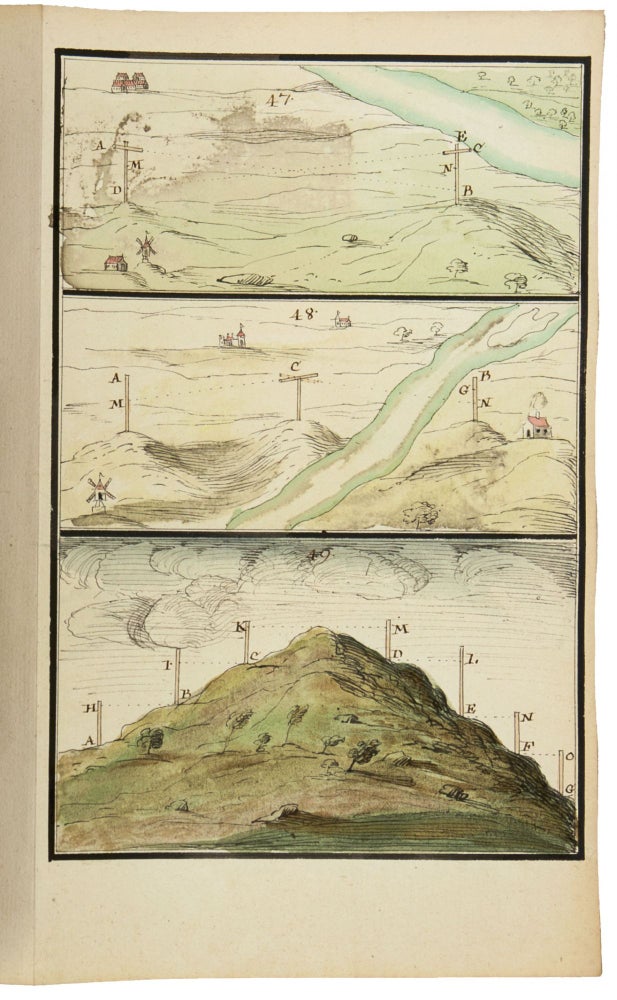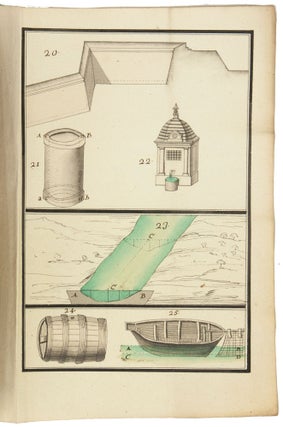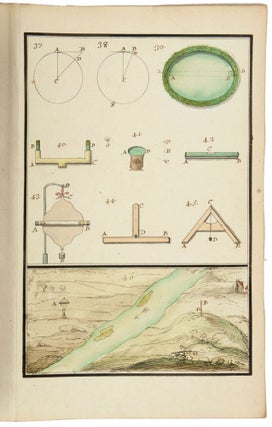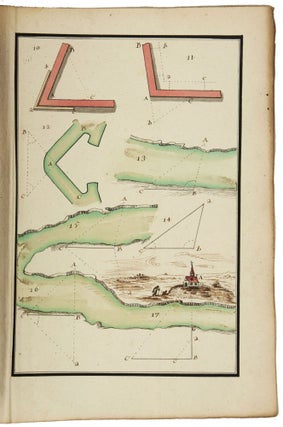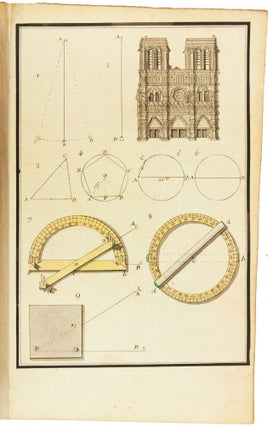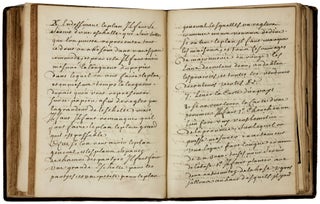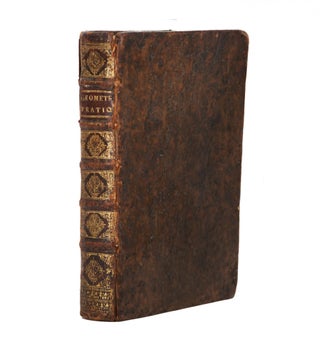Géométrique pratique.
Manuscript 4to. [23.5 x 17.5 cm], (2) ff. pencil sketch of arms [Marlborough?] and blank, [196] ff., and with 27 drawn folding plates, many of which are colored. Bound in contemporary French calf, spine gilt in six decorative compartments with title on letterpiece. Excellent, with all plates drawn, and many some colored, in a very professional hand. Very attractive early 18th-century French illustrated manuscript of practical geometry in seven books, including individual sections on longimetry, planimetry, and stereometry—the fundamentals of precision surveying and draftsmanship. The manuscript closely follows but is not identical to Jacques Ozanam’s Géométrie Pratique du sr Boulenger (Paris 1684), which itself was a revision of La Géométrie pratique (Paris 1640) by the mathematician Jean Boulenger. Though the work was reprinted well into the 18th C, the present volume seems to follow Ozanam’s 1693 edition most closely. Ozanam’s book, however, lacks the drawn and colored figures of the present volume, many of which are quite elaborate. The facade of Notre Dame is shown in an exercise for calculating the height of a wall, and a segment on proportion features detailed miniature maps of the Brittany coastline, identifying towns such as St. Malo and Mont St. Michel. The manuscript exemplifies the early 18th C approach to applied trigonometry—a field that, by the mid-17th C, was starting to resemble an exact science. Book II defines the common functions (sine, cosine, secant etc.); Book V treats longimetric puzzles such as determining the height of a mountain or a spire, or measuring the length of bodies of water; the final two books treat planimetry and stereometry, including applied trigonometry—calculating the volumes of real bodies, i.e. barrels, pipes etc. Those sections of the manuscript that do not appear in Géométrie Pratique—mainly a tract on logarithms, and a discussion of surveying instruments—also fall within Ozanam’s oeuvre, as he published a monograph on compasses in 1673, and a book of logarithmic tables and trigonometric functions in 1685. Jacques Ozanam (1640-1717) was best known for his Récréations mathematiques (Paris, 1694), which “may be regarded as the forerunner of modern books on mathematical recreations.” In addition to Boulenger’s work, he also revised that of Adriaan Vlacq (1600-1667) and the Jesuit mathematician Claude-François Milliet Dechalles.
* DSB.10 pp.263-265.
Price: $2,850.00

